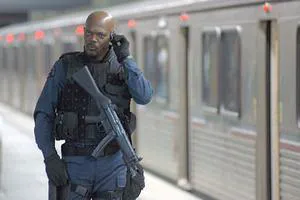S.W.A.T.: A Look at the Action Flick “S.W.A.T. City of Angels”
“S.W.A.T. City of Angels” is a moderately engaging action film that leans towards realism by avoiding CGI, though it still maintains a certain Hollywood distance from true authenticity. This is the overall impression of the movie, directed by television series veteran and feature film debutant Clark Johnson.
If you happen to watch the film, which isn’t an unpleasant experience, you’ll notice some distinctive and well-executed details.
Strengths and Weaknesses
The most significant, yet tolerable, flaw is the film’s division into two parts with varying degrees of plausibility. The first half is more engaging and realistic than the second. After a lively start featuring a difficult boss and an even worse partner, Colin Farrell, seemingly the main character, finds himself transferred from the Los Angeles S.W.A.T. team to an administrative department. However, he isn’t the sole protagonist, as Samuel L. Jackson, who the boss can’t handle, is tasked with creating a new, elite S.W.A.T. unit.
Team Building and Training
The film then delves into the meticulous process of selecting, training, and fostering camaraderie within this unit. Clark Johnson’s well-honed television aesthetic, combined with talented young actors, keeps the dialogue concise and engaging. Despite being 5’10", Colin Farrell appears small alongside Brian Van Holt and LL Cool J, but they all complement each other well, including the striking Michelle Rodriguez. Josh Charles stands out as the troubled T.J., a charismatic 32-year-old from Baltimore who once dreamed of playing basketball and has primarily been a television star.
Olivier Martinez is equally captivating as the drug lord. Unfortunately, his storyline detracts from the second half, where the S.W.A.T. team’s training is put to the test as they transport him from a local precinct to a federal prison. The traffic violator turns out to be an international criminal, which is believable enough. However, the criminal manages to shout to the media, within earshot of all of America, that he’ll pay $100 million to anyone who can break him out.
The Unrealistic Turn
The next morning, seemingly all of America is ready to attack the transport with elaborate escape plans, inevitably leading to action. The question is, how did these gangs manage to organize so quickly? How did they gather, create plans, assign roles, acquire weapons and equipment, calculate the transport route down to each intersection, and account for every possible contingency? Did they not sleep that night?

It seems as though all of America is constantly waiting for an opportunity to fight S.W.A.T. for $100 million. The second half becomes a showcase of S.W.A.T. capabilities and Hollywood spectacle, culminating in a plane landing on a Los Angeles bridge. The criminals even calculated that the wingspan of the yet-to-be-captured plane would fit perfectly under the bridge. While running down the stairs, they also determined that they could hijack a subway train and stop it between stations, directly above a sewer access point. Someone must have worked as a track inspector. Where else but in America can you find criminals with such diverse skills? And then, of course, there’s another chase through the sewers.
Final Verdict
While “S.W.A.T. City of Angels” has its share of clichés and inconsistencies, it’s better than “Shaft” but not as good as “Basic,” in terms of Samuel L. Jackson’s filmography. It also serves as a valuable lesson on why we shouldn’t attempt anything similar, regardless of any similarly titled TV series. It’s not about the technical aspects, but the underlying concept.